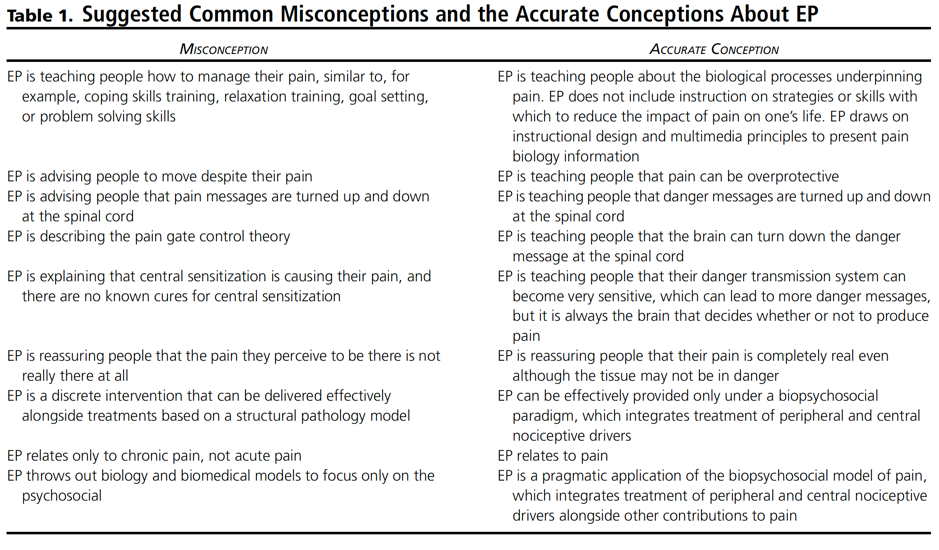Five years ago Lorimer Moseley and David Butler wrote a Critical Review for the Journal of Pain entitled Fifteen Years of Explaining Pain: The Past, Present, and Future. With the passing of another demi-decade and some simple maths, Explain Pain must be turning 20 this year and it’s worth taking another look at this paper and track how Explain Pain has grown from an awkward teen to a mature young adult.
What EP Is and What It Is Not
A key part of the paper was a review of the common misconceptions about Explain Pain that had emerged since its inception, and the provision of some more accurate ideas.
The table below summarises these succinctly. When we teach Explain Pain we use this table as a self-check and ask the participants (a self-selected group who often already have a good grasp on EP!) if they have any skeletons in their EP cupboard from the right hand side. Generally most of the group will intrepidly, but reluctantly, raise their hand.

How do you fare? We have found that it’s the final three on the right hand side that still furtively lurk.
If you feel the need to confess, you can leave a comment below!
Blast out the cobwebs with an EP course near you
An EP course is a great way to blast out any skeletons in your cobwebby EP cupboard and get up to date and upskilled with your pain treatment. EP has continued to grow over its 20 years and 2020 is the biggest and busiest year yet with EP courses around the globe.
Check out our website for all the details, as well as details for the many courses across the UK, Europe and USA.
Don’t let your misconceptions lurk, see you at a course soon.
-NOI Group

Woops, didn’t really pay attention to the subtle but important differences there despite being a Physiotherapist myself.
I was on both sides of the fence and now appreciating the distinction demonstrated here. Thank you!
Can you please produce evidence to support your firmly held position that “It is always the brain that decides whether or not to produce pain”?
This bold statement has been the main source of my concern because of the potentially negative implications when it is applied to people experiencing pain in whom there is no discernible source of ongoing tissue damage.